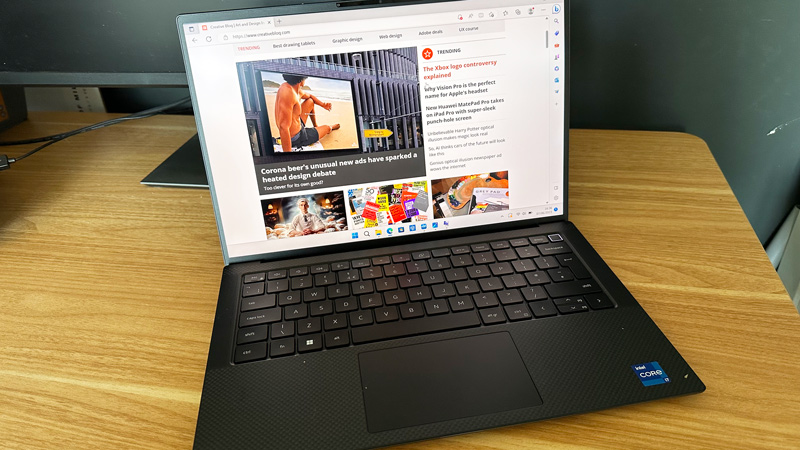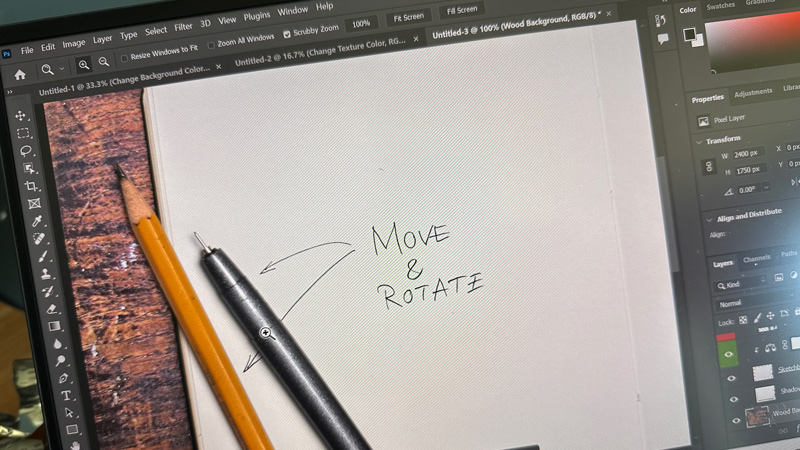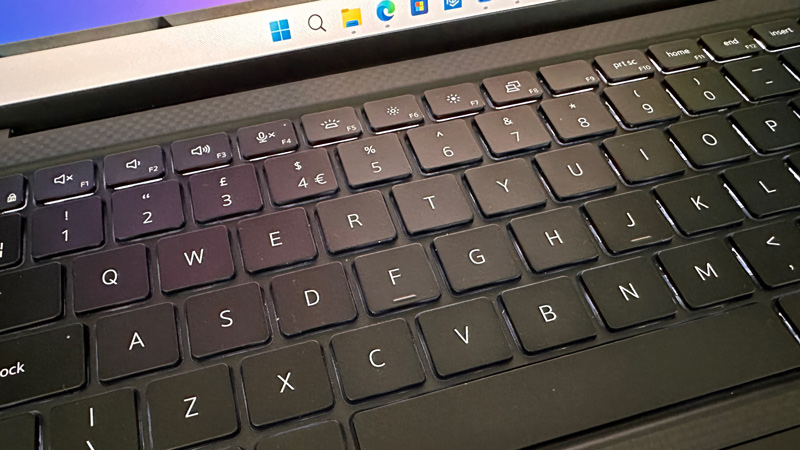
I'll be honest, Dell devices don't fill me with excitement. My first laptop was a Dell, and, because I didn't know how to use or look after it properly, the very limited memory quickly became clogged up with all sorts and it often took over 30 minutes just to load the home screen. While this was not exactly Dell's fault, the frustration of this time is etched in my memory, as I swore never to use a Dell laptop again.
Not long after, I moved to Apple and never looked back. Well, until very recently, when I had to move to Windows for work. Having been in the Apple ecosystem for well over a decade, it was like learning a whole new language, to which I was incredibly resistant. But the Lenovo ThinkPad I now use has made it easy and, dare I say it, an enjoyable experience. Newly reacquainted with Windows, when the opportunity came up to review this all-powerful Dell Precision 5470, I jumped at the opportunity to give Dell (and myself) a second chance.
The Precision 5470 is a mobile workstation, which, in plain speak, means it's a souped-up laptop. These devices are specifically designed to be portable (that's the mobile bit), but also pack enough power to allow users to carry out complex tasks that require a tremendous amount of memory (think rendering, 3D animation, video editing etc) on the go.
To do that they will have multiple processor cores (to enable the handling of running many programs at a time), a solid-state drive (SSD) to handle the workload of systems running, and a better graphics processing unit (GPU) to help the computer processing unit (CPU) display graphics.
The question is, how does the Precision 5470 perform as a mobile workstation? And is it good enough to land a spot in our round-ups of the best laptops for graphic design, or best laptops for programming? Let's find out...
Dell Precision 5470 review: Design and display

The Precision 5470 is Dell's smallest mobile workstation yet, and it can pack in a serious amount of power. But it's understated in its design, which you'd easily miss in passing. But up close the shape and sleek Titan Grey exterior exudes a certain class and elegance.
The lid when closed makes for an almost seamless seal to protect the valuable insides. Great for protection, but not so great for my fingernails when digging them underneath to open it. Turn it upside down (carefully) and you'll find rubber feet for stability and to aid cooling.
There's nothing about its design that makes you go 'wow', but I really appreciate its elegance and how great it feels to hold and use. To pick up it feels weighty and expensive, and its compact size makes it highly portable. The chassis measures 0.74 by 12.2 by 8.3 inches, weighs 3.26 pounds (1.48kg), and easily fits into most work bags.
Pop the lid and you'll find a carbon fibre keyboard deck, which, with a very satisfying key travel distance and resistance, offers a solid and enjoyable typing experience. As someone who often works late into the night, I have to say the keyboard backlight on this device is a highlight for me. The only tiny bugbear is the half-sized up and down arrow, which has been squeezed onto one key, however, I didn't notice it in use.
The display takes advantage of Dell's InfinityEdge micro-bezel design to fit a 14-inch panel into a compact chassis. And, honestly, it feels bigger. Put next to my everyday MacBook Air, which, granted is smaller at 13.3 inches, the just over half-an-inch difference looked like a lot more. The display also benefits from a 16:10 aspect ratio, giving slightly more vertical space than the standard 16:9 widescreen profile.
But what I wanted to know is how it looks. And the short answer is great. Colours pop and are vibrant on its 14 inches of 2560 x 1600 pixels, and I found this come to the fore, particularly when working in Photoshop. Even on a high zoom, colours were accurate and detail pin sharp.

Dell Precision 5470 review: Features
Okay, so the standout features of this unassuming-looking device are its power and the display. The latter we've already covered and the former I'll cover in more detail in the next section. So what else has the Dell Precision 5470 got going for it, I hear you cry?
Let's start with connectivity, or lack of it in this instance. To get such a compact design, compromises have had to be made, and ports have paid the price here. That said, there are four USB-C/Thunderbolt 4 ports (two on each side), an audio jack, a microSD card slot and a security lock slot. Dell provides a USB-C to USB-A 3.2 and HDMI adapter, but for other ports, you'll need a docking station.
The keyboard is a real highlight. The carbon fibre, matte and simply patterned design gives an air of real luxury and is a pleasure to use. The trackpad is smaller than I'm used to, but I quickly became accustomed to it and found it to be accurate and comfortable to use.
The Precision 5470 excels when it comes to battery life. I wanted to know exactly what it could handle in a real-world environment, so, on a full charge, I used it to image edit in Photoshop, render a small but complex scene in Cinema 4D, use the internet, send emails and when I wasn't using it, left it streaming various TV shows and films on Netflix and YouTube. It was just over 12 hours before it started showing signs of needing some more juice.
A key feature of a mobile workstation is being able to run complex tasks on the go, and it will only be as good as the battery allows. I'm happy to report the battery is more than capable here – you could use this machine pretty much all day before needing to recharge.

Dell Precision 5470 review: Performance
I'll be honest, the technical side of performance is less interesting to me than what it actually translates to in a work environment. But it's important so let's take a quick look. I'm using a Dell Precision 5470 model with a 12th Gen Intel Core i7-12800H processor, 1TB SSD and NVIDIA RTX A1000 graphics card.
Here's how the Dell Precision 5470 performed in our suite of benchmark tests:
Cinebench R23 CPU: Single-Core: 1,699; Multi-Core: 11,154
Geekbench 6: Single-Core: 2,215; Multi-Core: 11,320
When running standard benchmark tests, the device recorded some really impressive results. I realise these numbers alone mean very little, so let me provide some context. In short, they show the 5470 can run incredibly labour-intensive tasks (image editing, video, 3D rendering etc), with no lag or performance issues.
In comparison to other powerful laptops we've tested, the results are extremely close to that of a MacBook Pro 14-inch M2 Pro, with a 12-Core CPU, 19-Core GPU, 32GB Ram and 2TB SSD – which, in the UK, would cost approximately £1,000 more than the Dell Precision 5470.
There is absolutely no denying this machine packs a punch when it comes to power, however, there are more powerful, larger mobile workstations available. The 5470's power is amazing, however, it is compromised marginally by its class-leading mobility and battery life.
Price
The model I am testing costs $1,919 / £2,414 if you were to buy it directly from Dell at the time of writing. While that might seem like a lot, and it is, you'd be hard pushed to find a quality mobile workstation, with as much power, battery life and portability for less. The initial outlay of this machine might hurt your wallet for a while, but when you consider how long this will last you and what you'll be able to do with it, in my opinion, it offers really good value for money.
Should I buy the Dell Precision 5470?
As I mentioned earlier, the Dell Precision 5470 is its smallest mobile workstation, which sets it apart from the competition. The top-quality build, super power and incredible battery life, all packed into such a slim 14-inch design, makes it one of, if not the, in my opinion, best options for taking professional-level performance on the go.
There are, of course, factors to consider. Trade-offs for its portability mean less power than in other larger models, and anyone wanting to run the most demanding, graphics-intensive applications might need to look elsewhere. But when you take everything this little machine has to offer, and how long it can deliver it in one go, it's up there as one of the best mobile workstations available.







